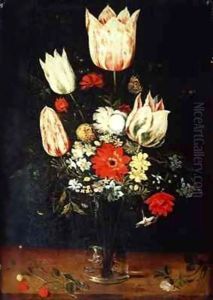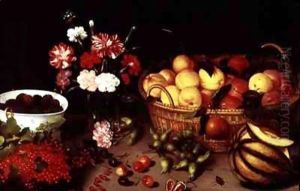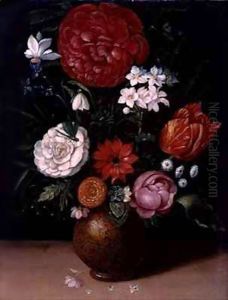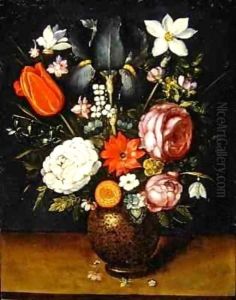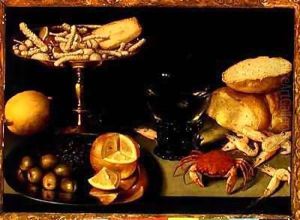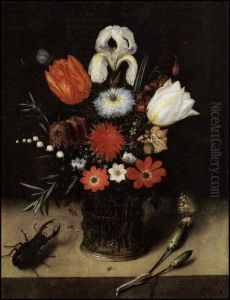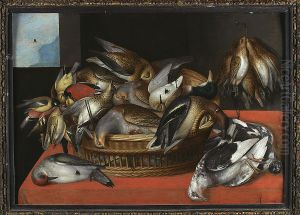Peter Binoit Paintings
Peter Binoit, born in 1590, was a notable figure in the world of still-life painting during the early 17th century. His work is emblematic of the Northern European still-life tradition, particularly within the German context where he was most active. Binoit's paintings are distinguished by their meticulous attention to detail and vibrant use of color, characteristics that have cemented his reputation among art historians and collectors alike.
Binoit's career unfolded during a period of significant evolution in still-life painting, a genre that was gaining prominence and respectability. Unlike his contemporaries in the Netherlands, who were also delving into the still-life genre, Binoit's work was deeply influenced by the traditions and artistic preferences prevalent in Germany at the time. His compositions often featured arrangements of flowers, fruits, and sometimes objects of domestic life, rendered with a precision that underscored the beauty and transience of the natural world.
Despite the scarcity of biographical details about Binoit's life, his surviving works offer valuable insights into his artistic journey and the stylistic trends of his era. Binoit was adept at capturing the texture and materiality of his subjects, a skill that lent his paintings a remarkable sense of realism and depth. This ability not only illustrates Binoit's technical prowess but also reflects the broader cultural and philosophical interests of the 17th century, particularly the fascination with naturalism and the meticulous study of the natural world.
Peter Binoit's contribution to the still-life genre was significant, yet his work has not always received the attention it deserves in the broader narrative of art history. His paintings, however, continue to be appreciated for their beauty and historical value, offering a window into the artistic and cultural milieu of early 17th-century Germany. Binoit's death in 1632 marked the end of a career that, though not extensively documented, left a lasting impact on the development of still-life painting in Northern Europe.
